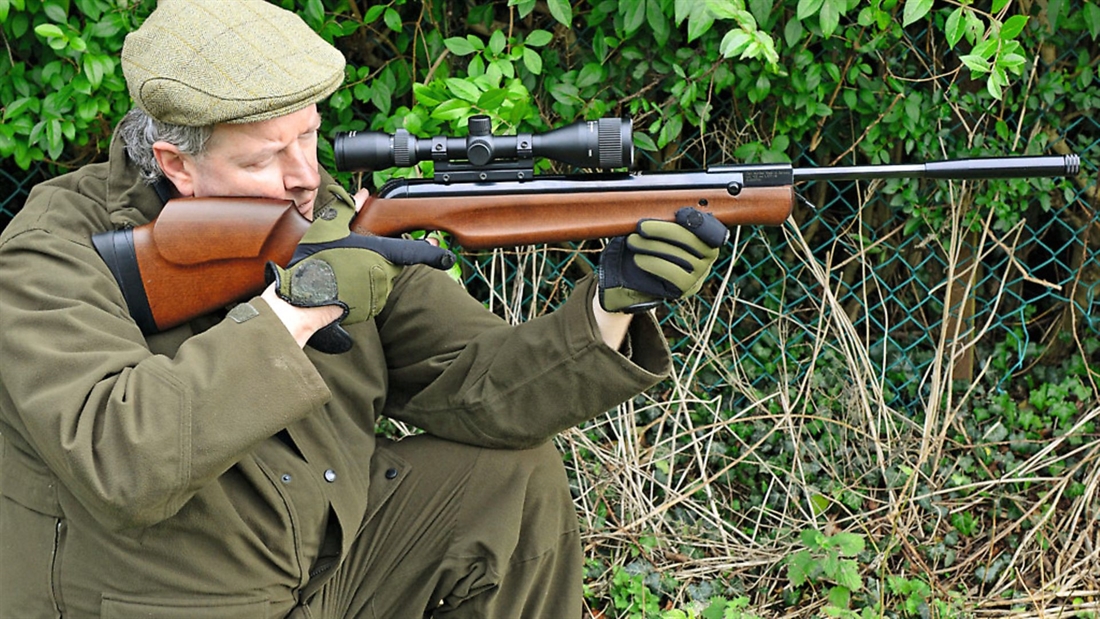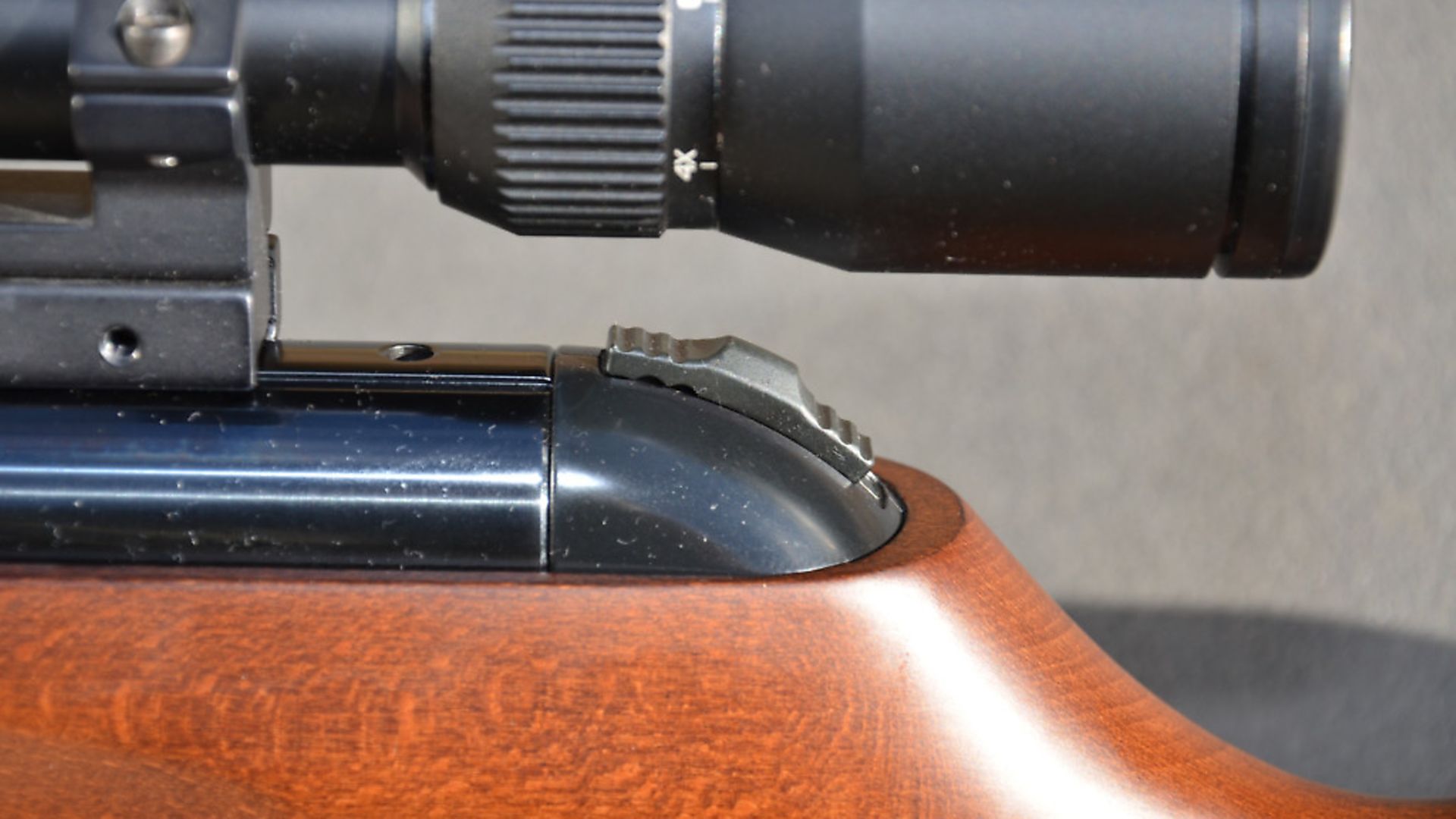Gun test part two: Walther LGV Master Pro
Would you like to appear on our site? We offer sponsored articles and advertising to put you in front of our readers. Find out more.
In part 2, Mark Camoccio concludes his review of the lovely Master Pro
See Mark Camoccio’s first review here.
Last month, we began looking at the top end, fully tuned Walther Master Pro. This month, we take a look inside. Walther named the processes behind their applied technology, and they are summed up as follows:
Super-Silent Technology
Super Silent Technology is how Walther terms the measures taken to reduce noise in the rifle’s action. ‘Zero-play fit’ refers to the added nylon bushes and small pads around the internal bearing surfaces; the barrel lock, and cocking rod. Run these smooth, and the whole cocking operation is slick and controlled.
Vibration Reduction System
The Vibration Reduction System is how Walther terms their process for ensuring an ultra-smooth firing cycle, achieved by incorporating piston rings made from a low-friction synthetic material. This results in zero play around the piston. All aspects of design were monitored in development, and the result is an ‘optimised’ piston, that breaks on an air cushion at the end of its travel. It’s also allowed to rotate fully, with ‘anti-torque’ built in. Walther also drills transfer holes for each energy level, at optimum locations, and these all help to reduce recoil. The mainspring is manufactured from tempered valve-spring wire, whilst a full-length, close-fitting spring guide is also fitted as standard, all but eliminating resonance.
So how does it feel?
As you may have realised, this is a comprehensive, no half measures exercise, and shooting the Master Pro reveals a thoroughbred that really does deliver on all counts. As with all the LGV models, that super-solid barrel lock system lies at its heart, and its operation soon becomes second nature. To cock the action, squeeze the barrel and catch together, and the breech will then open easily. The barrel is semi-carbine length at 15.5inches, so no major leverage advantage, yet grip the barrel weight and adopt a positive downwards stroke, and the effort is reasonable.
The cocking stroke itself is incredibly smooth and devoid of any spring graunch, as you would expect. With the Master Pro broken, a pellet can then be pushed home flush in the crisply machined breech face. Look carefully at the open breech block, and the small cut-out incorporated into the profile is further evidence that a perfect secure lock-up will be achieved. Close the breech and the lock automatically comes into play. This model comes with an automatic safety catch, and the shotgun-style catch just needs to be thumbed off at the rear of the cylinder.
A gun of this class obviously deserves a decent trigger, and this model gets Walther’s XM unit, a fully-adjustable, two-stage design. On test, I did find the first-stage travel too long, although my adjustment skills are not the best! However, that satisfyingly flat trigger blade and sensitive mechanism overall, only help to promote top-grade accuracy. As you fire the LGV Master Pro, you suddenly appreciate the level of preparation that goes into its production, as all those sophisticated components come together as one. Of course, there is still recoil, but the firing cycle is devoid of any spring twang or resonance – rather just a slick snap, and the shot is gone.
Performance
Next stop was the chronograph, to see just how consistent the power plant could be. Of course, we can get too hung up on minimum variation velocity figures, but it is always immensely satisfying to see those figures come in. With the LGV Master Pro, I initially recorded very creditable 10-shot strings of 10fps shot to shot, with both Air Arms Diabolo Field ammo, and Accupells, straight from the tin. Accuracy was also impressive, as you would expect, but with a variety of ammunition, which is always pleasing; 3/8” centre-to-centre groups were posted with RWS Superdome in .177, shot over 30 yards from an FT over-arm position. Yet switching to Air Arms Diabolo Express reduced the groups still further, down to just a quarter inch centre-to-centre, again over 30 yards. Superb results and proof, if it were needed, why the LGV models have been so well received since their introduction.
Recommended
I liked the standard LGV when it first came out, but the stock was bland, and it was rather expensive, too. This latest Walther LGV Master Pro now offers a great handling, superbly made classic sporter that looks brilliant, and shoots with real aplomb. The downside has to be the weight, and that fairly short barrel, meaning cocking effort is greater than some rivals. Yet for any reasonably fit adult, the sheer pedigree of this Walther must edge into any short list. The action feels genuinely fully tuned, straight from the box, always the manufacturer’s intention, and with an unbeatable level of performance on offer, this model can handle anything asked of it, be that field target, HFT, or short hunting trips.
I’m not quite sure how they make it in Germany for the money, but having seen that production line, I’m definitely a fan of the Walther Master Pro – surely one of the very best value, top-class spring guns currently available.
Specification
Model: LGV Master Pro
Manufacturer: Walther
Country of origin: Germany
Type: Break-barrel, spring-powered
Calibre: .177 on test/.22 available
Weight: 9.3lbs
Overall length: 43 inches
Barrel length: 15.5 inches
Stock: Beech sporter with adjustable butt pad
Trigger: 2-stage XM unit
Velocity: Using Air Arms Diab.Field/
Ten-shot spring:
High 767fps
Low 757
Ave 765
Spread 10fps
Energy: 10.9 ft.lbs.
Contact: Armex Ltd on 0121 6434900
Guide price: £420.00
Related articles
And the award goes too...
Hundreds were nominated, over 50,000 votes were cast, and now it’s time to reveal who won what at the Great British Shooting Awards
By Time Well Spent
Get the latest news delivered direct to your door
Subscribe to Airgun World







